The Quantification Trilogy of Jeremy Shaw / Julia Stoschek Collection
by Elda Oreto
How could we imagine the human body if not as a door or a vehicle, as something that can be crossed and that crosses, perhaps a path but it is also its own obstacle in a dialectic of growth. This door or this path leads in different directions both in space and in time but that, in any case, cross the limits of the individual, of the private, ideological and real to lead towards an abyss of complete fusion between the Self and the Whole.
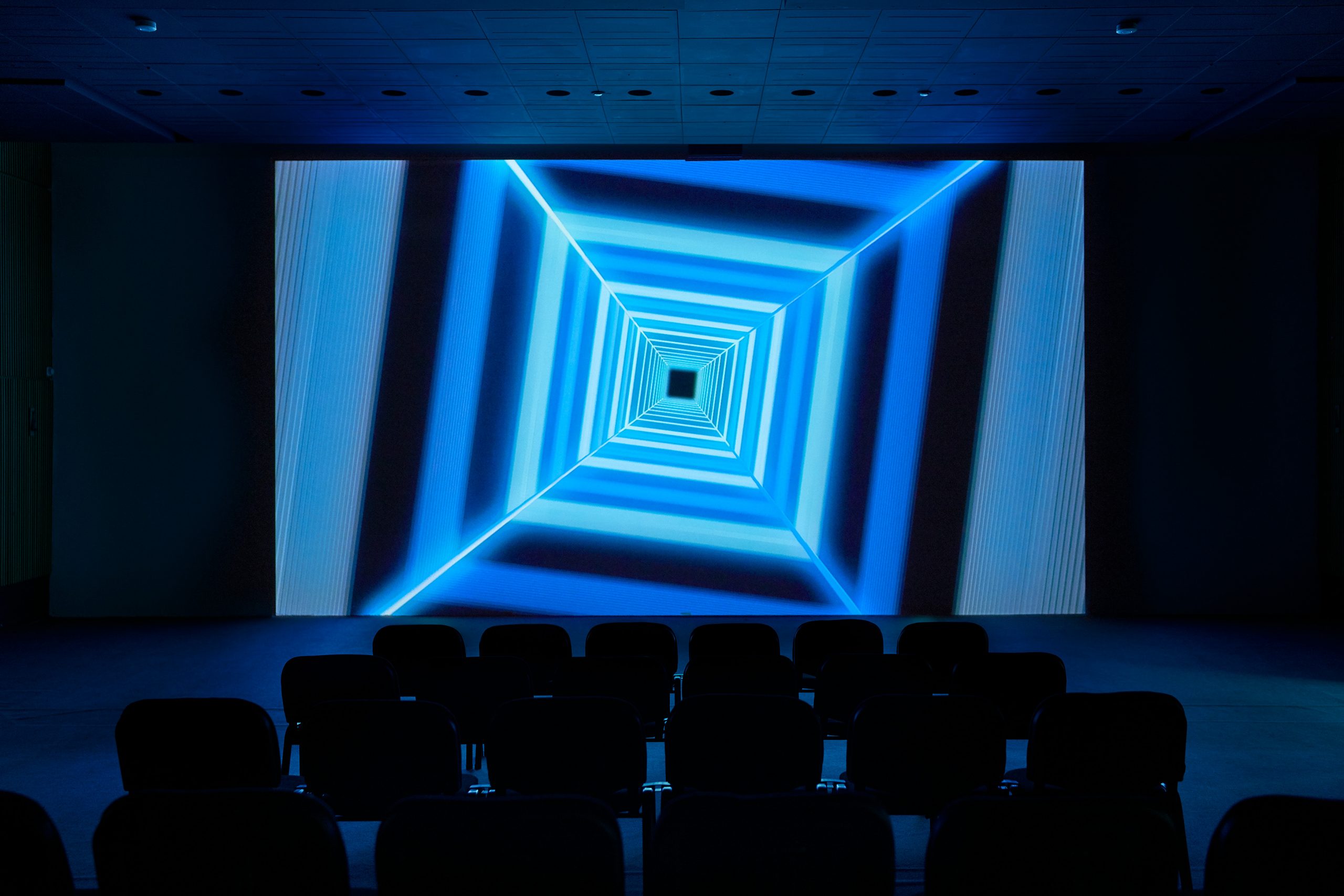
Jeremy Shaw, I Can See Forever, 2018, two-channel HD video installation; VHS video and HD video transferred to video, 44′05″, color, sound. Installation view, JEREMY SHAW, QUANTIFICATION TRILOGY, JSC Berlin. Foto: Alwin Lay.Jeremy Shaw’s Quantification Trilogy, presented at the Julia Stoschek Collection until November 29, 2020, is set in a parallel, science-fiction world. This world called “parafantascientific” has its own rules, its own language, its own formal aesthetic, its own absurdity. It is our Other. The stranger, the unknown. Knowledge and the possibility of reaching the Other are the subject around which the three films Quickeners (2014), Liminals (2017) and I Can See Forever (2018) revolve. The Canadian artist, who lives and works in Berlin, made these films during different periods of time. The first was Quickeners, in 2014, set 500 years after our present. Liminals, made in 2017, is set 100 years from now; and I Can See Forever, the most recent in 2018, is set about 40 years from now. It is precisely from this last film that the exhibition itinerary begins and then goes back to the first filmed. Describing a time span of 500 years the observer is placed sometime in a further future.
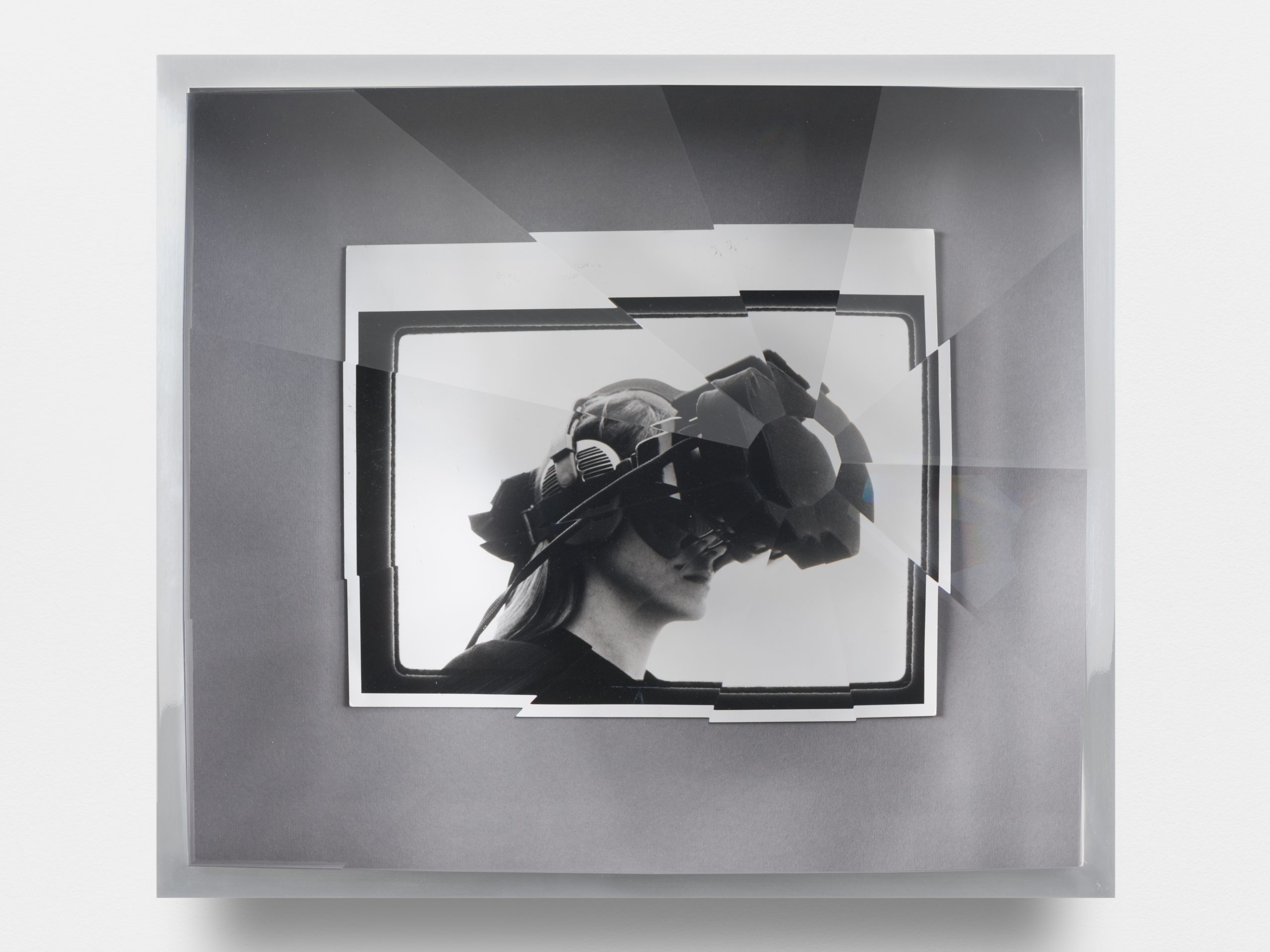
Towards Universal Pattern Recognition (Copy 9.3.91. Computers. Sep 23 1991), 2016, Archival photograph; b/w, acrylic, chrome; b/w, Acryl, Chrome, 37,5 x 42,5 x 16 cm. Courtesy of the artist and Jorinde Voigt, Berlin.The three films in a found footage format tell a story through an external narrator voice. The starting point, which is also a little bit the common thread that connects the three films, is an event, possibly located in our present, called “Quantification”. This event consists of a collective awareness that allows humanity to understand everything, any aspect of life and death, to know everything. A bit like flattening a three-dimensional object on a sheet to be able to look at it from all sides at the same time.
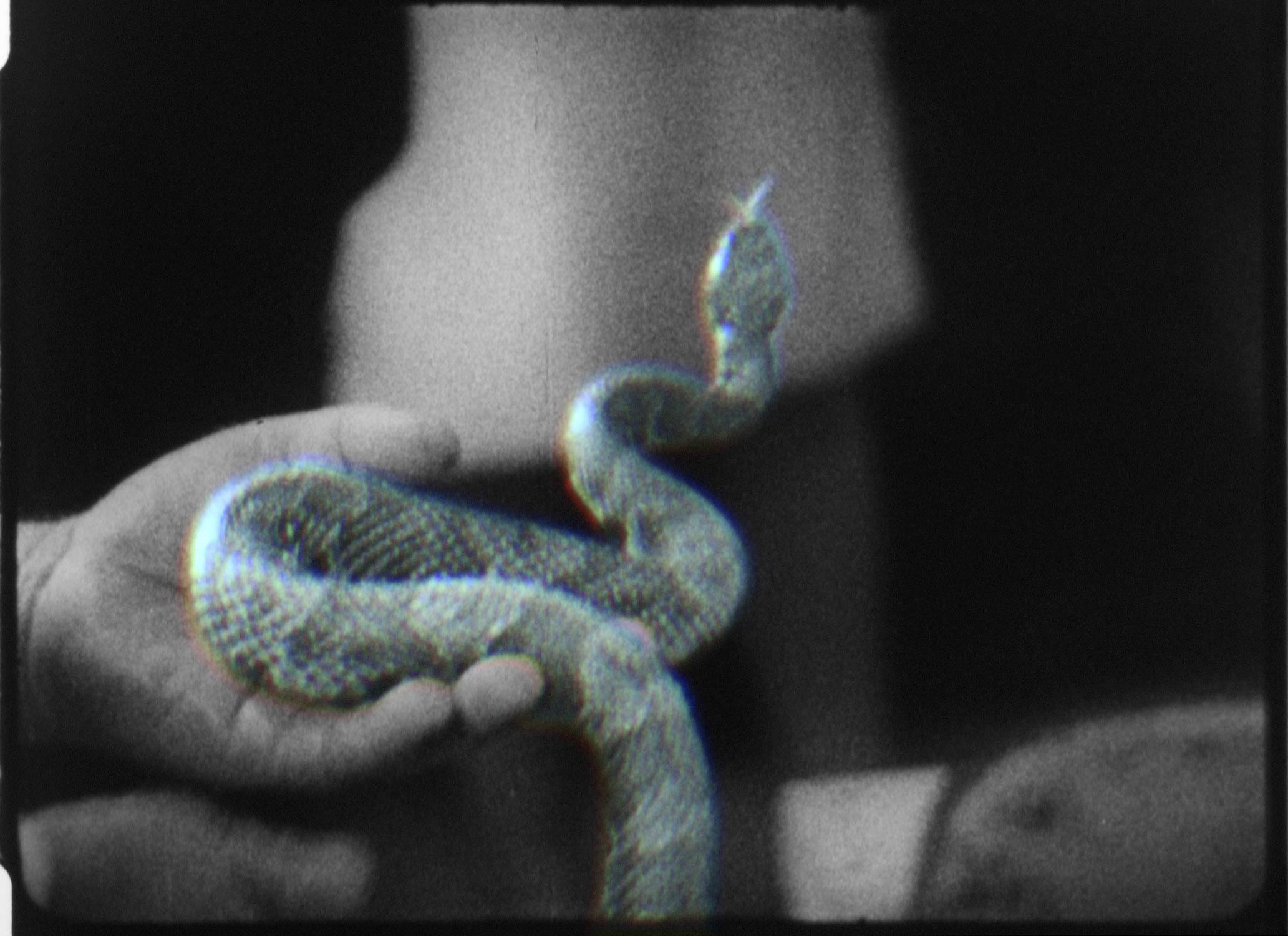
eremy Shaw, Quickeners, 2014, 16mm film transferred to video, 36′24″, color, sound. Video still. Courtesy of the artist and König Galerie, Berlin.Which is also a way of not feeling, controlling, moving away from the emotional and therefore uncontrollable and mysterious part of life. But freezing feelings leads to a flattening of the mind. And, in fact, this event has catastrophic consequences for the human race which, without a ‘spiritual’ dimension, is destined for extinction. Forty years after Quantification, the government conducts experiments on humans to create Cyborgs by injecting machine DNA into the human body. But the experiment, very dangerous, leads the human guinea pigs to go blank, that is to cancel themselves in a mechanical superconsciousness which we will later discover is called The H.I.V.E.

Jeremy Shaw, Liminals, 2017, 16mm film and HD video transferred to video, 31′25″, color, sound. Video still. Courtesy of the artist and König Galerie, Berlin.During the experimentation period, children are born who automatically enter the blank zone. Only one, different from all the others, has a particular DNA with a slightly lower mechanical gradient and possesses special qualities, exceptional agility and physical strength in dance, an incredible memory and the ability to feel things and see beyond their surface. This boy, Roderick Dale, dances wonderfully and reaches a state of mystical ecstasy that makes him transcend and merge with the Whole. The short film ends with an extraordinarily evocative dance sequence in which the image slowly crumbles in a prismatic shape and in which the dancer’s body shatters and recomposes itself into an abstract form.
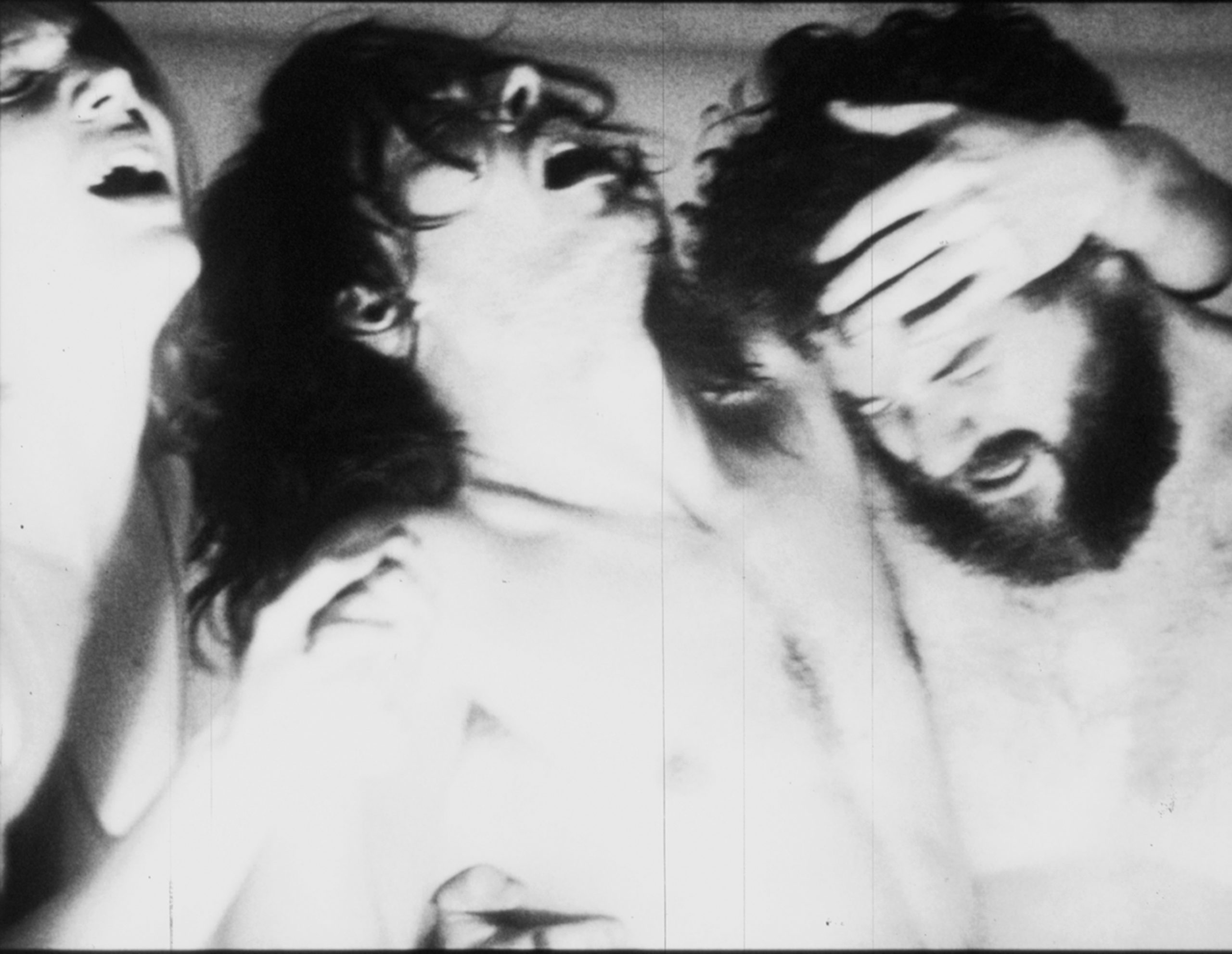
Jeremy Shaw, Liminals, 2017, 16mm film and HD video transferred to video, 31′25″, color, sound. Video still. Courtesy of the artist and König Galerie, Berlin.Liminals (2017) is the second moment in history, set 100 years from our present. Mankind has reached the awareness that it will be extinct soon, after an event called “The Announcement” and is desperate to find a formula of salvation. “In stark contrast to Humanity’s growing apathy towards The Announcement’s revelation of our inevitable extinction, periphery altruist cultures have reacted by launching idealistic crusades that desperately attempt to incite evolutionary advancement. They hope to save, or at least prolong, our remaining time on this planet. One of the most radical and compelling of these groups speculates that a specific paraspace could serve as a transitory zone for Humanity — an intermediate area between the physical and the virtual where a generative incubation period towards our next phase in evolution could take place. They refer to this paraspace as The Liminal.” The film imitates the style of a found footage format of the 60s or 70s and has the same structure as the first one. In a climax of images and music the narrating voice disperses into a frantic rhythm and obsessive dance that leads to the decomposition of the image.
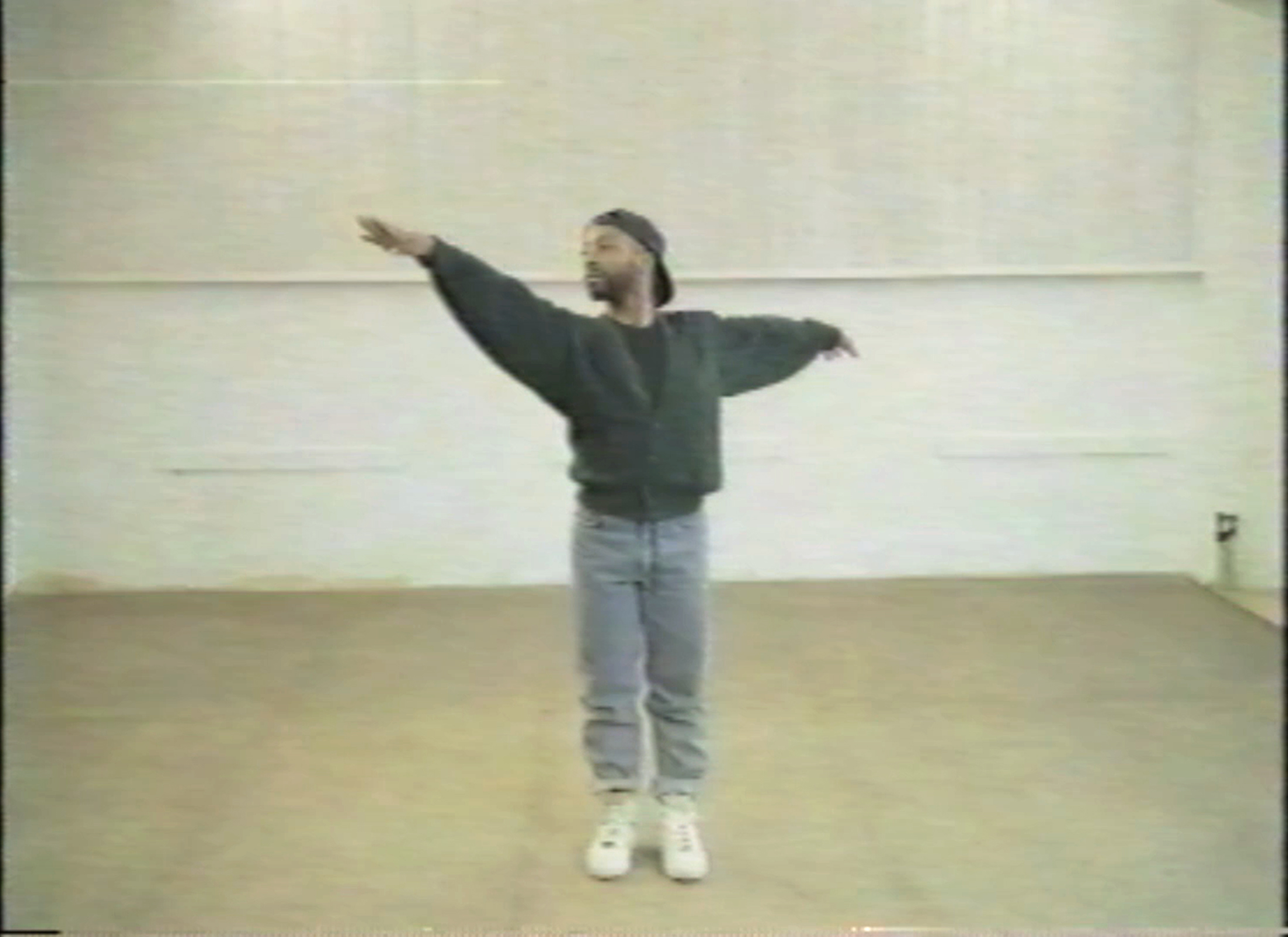
Jeremy Shaw, I Can See Forever, 2018, two-channel HD video installation; VHS video and HD video transferred to video, 44′05″, color, sound. Video still. Courtesy of the artist and König Galerie, Berlin.The last film is Quickeners, which was also the first of the trilogy to be made in 2014, differs from the first two because it is a real documentary about a religious sect of the 1950s. Shaw manipulated the narration of the documentary for the purpose of his story. The off-screen voice, similar to that of a Robot, tells us that humanity has been completely extinct for 400 years and has been replaced by Quantum Humans. Quantum Humans live in perpetual and inseparable connection with a higher technological entity The Hive, a kind of mechanical neuronal structure. The QH no longer have any aspect of sociality, spirituality, they do not feel, they have no emotions. In a phantom Area 23 some Quantum Humans show a behavior disorder called H.A.S. which consists in the survival form of antecedent human behaviors: making music, dancing, singing, screaming, praying, sharing.

Jeremy Shaw, I Can See Forever, 2018, two-channel HD video installation; VHS video and HD video transferred to video, 44′05″, color, sound. Video still. Courtesy of the artist and König Galerie, Berlin.These Q.H. through some rituals they manage to detach themselves from The H.I.V.E. and to reach a deeper stage of consciousness. “It is during these mimed ceremonial activities that the Quantum Humans with H.A.S. detail a phenomenon that they refer to as “Quickening” and define as a moment of pure cathartic transcendence achieved via a strictly organic biological means — disconnecting one completely from their direct neural link to The Hive and any extraneous technology at all. Although the instance of a “Quickening” would violate all logic within our Quantum Human existence, it is the pursuit of this speculative phenomenon that has earned them the name: Quickeners.” explains the Robot voice. The Quickeners distinguish themselves from the others in the black and white film to acquire a sort of evanescent light.
Jeremy Shaw’s films have something that is haunting. The artificially documentary format goes incredibly well with the use of special effects, new technologies and music. Shaw also invents its own linguistic system characterized by a terminology that takes words from different contexts, science, philosophy, anthropology, religion to give them a new meaning that refers to the “parafantascientific” world invented by him.
Each film has a structure that pursues a climax that ends with a combination of music and images that mimic this mystical fusion with a higher spiritual entity, into which the viewer is absorbed. The trilogy itself repeats a pattern of Hegelian dialectic.
It reminds of the ecstasy of Saint Teresa of Avila and the search for a complete mystical fusion with God described in The Inner Castle: “This secret union takes place in the deepest centre of the soul, which must be where God Himself dwells, and I do not think there is any need of a door by which to enter it. I say there is no need for a door because all that has so far been described seems to have come through the medium of the senses and faculties… But what passes in the union of the Spiritual Marriage is very different. The Lord appears in the centre of the soul, not through an imaginary, but through an intellectual vision (although this is a subtler one that that already mentioned), just as He appeared to the Apostles, without entering through the door, when He said to them: “Pax vobis” {cf. John 20:19,21}. This instantaneous communication of God to the soul is so great a secret and so sublime a favour, and such delight is felt by the soul, that I do not know with what to compare it, beyond saying that the Lord is pleased to manifest to the soul at that moment the glory that is in Heaven, in a sublimer manner than is possible through any vision or spiritual consolation. It is impossible to say more than that, as far as one can understand, the soul (I mean the spirit of this soul) is made one with God, Who, being likewise a Spirit, has been pleased to reveal the love that He has for us by showing to certain persons the extent of that love, so that we may praise His greatness. For He has been pleased to unite Himself with His creature in such a way that they have become like two who cannot be separated from one another: even so He will not separate Himself from her”.
Elda Oreto

